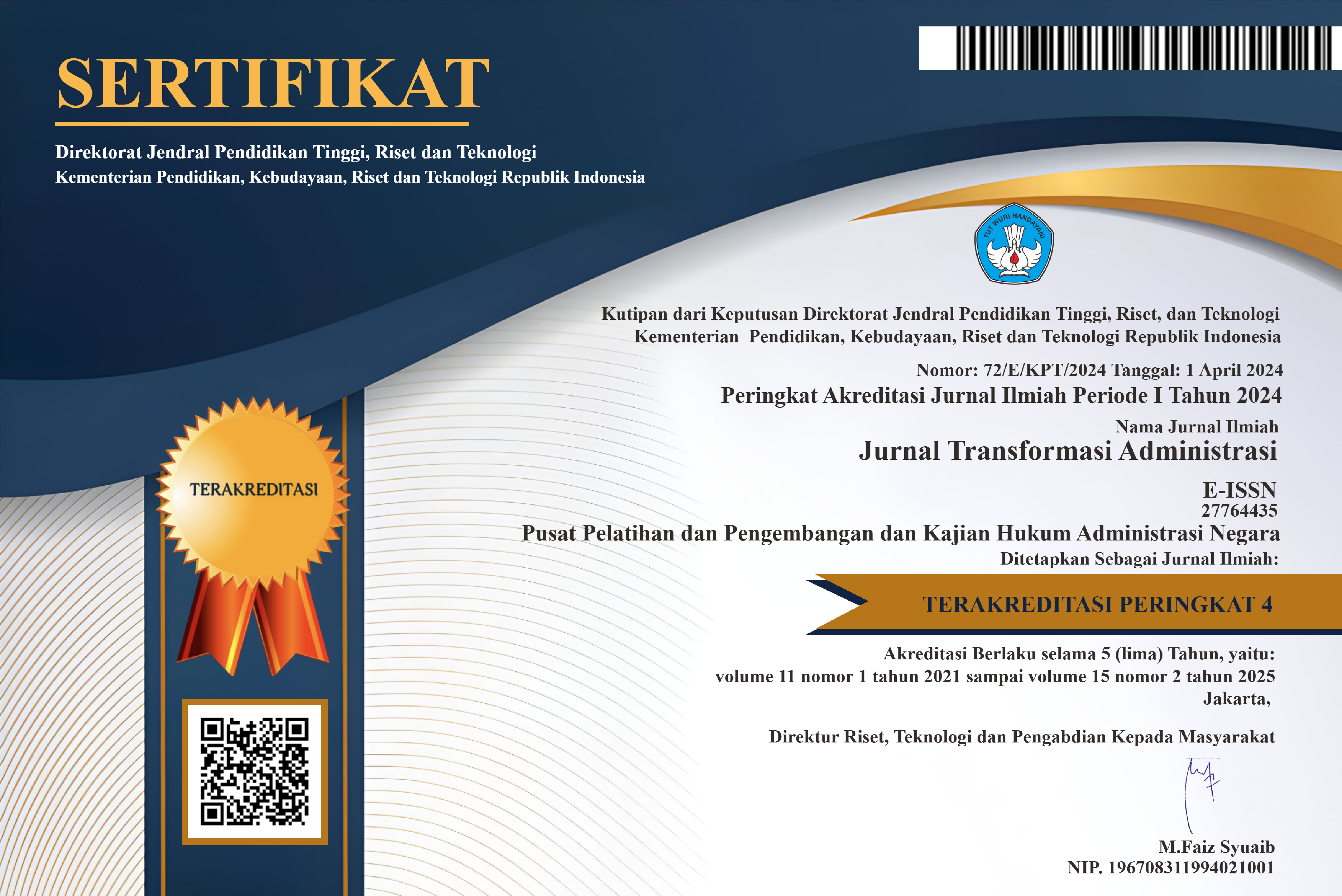The Application of Blended Learning Model in Leadership Training at the Puslatbang KHAN LAN
DOI:
https://doi.org/10.56196/jta.v13i01.248Keywords:
Blended Learning Models, Leadership TrainingAbstract
The National Institute of Public Administration has updated its curriculum and learning strategy by applying a blended learning model to the implementation of Leadership Training to adapt the needs and policy dynamics. This study aims to explore how the Puslatbang KHAN LAN implements the new curriculum by referring to the theory of Jared M. Carman (2005) which states that there are five keys to success in implementing blended learning. The five keys to success are believed to be able to provide an overview of how to be successful in using blended learning in order to improve the quality of learning. This research was conducted qualitatively by conducting direct observations, interviewing organizers and facilitators involved in the process of organizing the training. Review of regulatory documents governing the implementation of structural leadership training was also carried out to support the research results. The results show that the Puslatbang KHAN LAN has succeeded in implementing blended learning in Leadership Training in accordance with the theory of the five keys to successful implementation of blended learning declared by Jared M. Carman by creating various efforts so that the learning process runs smoothly and the training objectives can be achieved.
References
Asbari, M., Purwanto, A., & Santoso, P. B. (2020). Pengaruh Iklim Organisasi dan Kepemimpinan Transformasional Terhadap Produktivitas Kerja Inovatif Pada Industri Manufaktur di Pati Jawa Tengah. Jurnal Produktivitas: Jurnal Fakultas Ekonomi Universitas Muhammadiyah Pontianak, 7(1).
Bambang, S., & Hasan, A. (2018). Implementasi Model Pembelajaran Blended E-Learning pada Diklat Pengadaan Barang/Jasa di BPKK.
Carman. J.M. (2005). “Blended Learning Design : Five Key Ingredients.
International Association for K-12 Online Learning (iNACOL). (2015). “Blended Learning: The Evolution of Online and Face-to-Face Education from 2008-2015”.
Keputusan Kepala Lembaga Administrasi Negara Nomor 374 Tahun 2022 tentang Kurikulum Pelatihan Struktural Kepemimpinan.
Keputusan Kepala Lembaga Administrasi Negara Nomor 375 Tahun 2022 tentang Pedoman Penyelenggaraan Pelatihan Struktural Kepemimpinan.
Peraturan Lembaga Administrasi Negara Nomor 5 Tahun 2022 tentang Penyelenggaraan Pelatihan Struktural Kepemimpinan.
Oliver. M, Trigwell. K. (2005). “Can ‘Blended Learning’ Be Redeemed?”. Journal E-Learning, Vol. 2, Number 1: 17-26.
Peraturan Lembaga Administrasi Negara Nomor 6 Tahun 2022 tentang perubahan atas peraturan Lembaga Administrasi Negara Nomor 5 Tahun 2022 tentang Penyelenggaraan Pelatihan Struktural Kepemimpinan.
Rasheed, R. A., Kamsin, A., & Abdullah, N. A. (2020). Challenges in the online component of blended learning: A systematic review. Computers & Education, 144, 103701.
Sumual, T. E. (2015). Pengaruh Kompetensi Kepemimpinan, Budaya Organisasi terhadap Kinerja Pegawai di Universitas Negeri Manado. MIMBAR: Jurnal Sosial dan Pembangunan, 31(1), 71-80
University of Western Sydney. (2013). “Fundamentals of Blended Learning”.
Whitelock, D., Jelfs, A. (2003). “Editorial: Journal of Educational Media Special Issue on Blended Learning”. Journal of Educational Media vol 28: 99-100.















